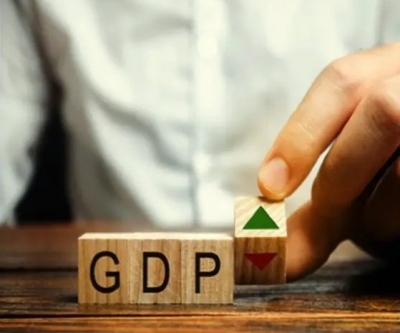By Sanjeev SharmaNew Delhi, Jan 30 : A peak level of India’s public debt/GDP ratio at 91.7 per cent, near doubling of combined fiscal deficit in the aftermath of the pandemic averaging at 12 per cent, and worsening of debt sustainability indicators to the 2002 levels may be driving fiscal conservatism, JM Financial said in a report.
However, we see greater chances of moderating fiscal support from both the Centre and the states.GoI’s spending in the proportion of Budget estimates is already restrained to levels that were last seen during the peaks of the economic boom in FY07-08, the report said.
Thus, the FY23 Union Budget may bet heavily on private sector revival as we saw after 2003 even as it targets conservative spending.The risk is that premature fiscal conservatism may prove to be counter-productive if the private sector does not recover adequately enough, the report said.
FY22 fiscal management is wedged between additional spending of Rs 3 trillion on top of the budgeted Rs 34.8 tn (free food programme, Air India dues, fertiliser subsidy, MGNREGA, export arrears, etc), and shortfall in inflows (excise duty cuts, delay of 5G auctions and a scenario where despite the reiterated intent of the government, the BPCL divestment and LIC IPO are not completed by fiscal year-end), the report said.
While the additional spending would have meant a healthy 43 per cent YoY rise in productive spending (i.e.adjusting for the FCI loan repayment in March’21), chances are high that not all of this may be spent.This is because the Centre’s spending is already lagging with FYTD22 (Apr-Nov’21) spending ex-interest payments (IP) growing modestly at 6.0 per cent YoY.Thus, only 60 per cent of the budgeted target has been spent so far, which is significantly lower than 70 per cent during FY16-FY20 and nearly equal to levels seen during boom times of FY07-08, JM Financial said.
If indeed the budgetary inflows do not materialise, some part of the additional Rs 3 tn may be subsumed within the overall budgeted spending by cuts in spending on some components.Thus, the slippage on GoI’s fiscal deficit/GDP for FY22 may be a marginal 10-20 bps higher than the budgeted 6.8 per cent.Additional spending will, however, still mean higher expenditure growth during the residual months of FY22 than YTD 6 per cent YoY.
Sustainability concerns may prompt GoI to lower FD/GDP target at 6.4 per cent in FY23.
Until the pandemic, the Centre’s liabilities ratio has been steady even as it was rising for states, thus, keeping overall debt levels more or less constant.However, following the pandemic, India’s combined government debt/GDP ratio has risen to 91.7 per cent (FY21), similar to peers.
Key indicators for the Central government liabilities indicate rising discomfort.
Thus, given the fiscal conservatism already visible, we expect the Union Budget to provide greater details on the pace of future fiscal consolidation path, the report said.
The FRBM Act identifies debt sustainability with a FD/GDP target at 3 per cent.However, in the light of the pandemic shock, GoI adopted a major deviation in FY21/22 and guided for fiscal deficit/GDP normalisation to 4.5 per cent by FY26.
In line with that target, we expect the Union Budget to target FD/GDP at 6.4 per cent in FY23E, down from 7.0 per cent in FY22E.Total expenditure budget for FY22E is expected around 10 per cent odd higher than FY22E or Rs 39 tn.Focus is expected to continue on rural India, health and capex.Fiscal deficit for FY23E is expected at Rs 6.7 tn or 7.7 per cent higher than FY22E, the report said.
JM Financial said the role of fiscal support will continue to be very crucial for India’s growth if the trajectory of private consumption and private investments remains on a modest recovery path.Therefore, the fiscal strategy of the Union Budget should focus on providing support on the demand side compared to the supply side.
Revival in the damaged informal sector and small businesses that create a wider level of jobs will be crucial.
Support to the real estate sectors, by way of tax measures, can also revive the demand side.
Improved demand support through sustained fiscal measures can eventually crowd in private capex, the report said.
(Sanjeev Sharma can be reached at [email protected])
san/skp/
#debt #sustainability #indicators #levels #fiscal #conservatism #Delhi #Jan #Delhi #New Delhi #Air India
.






